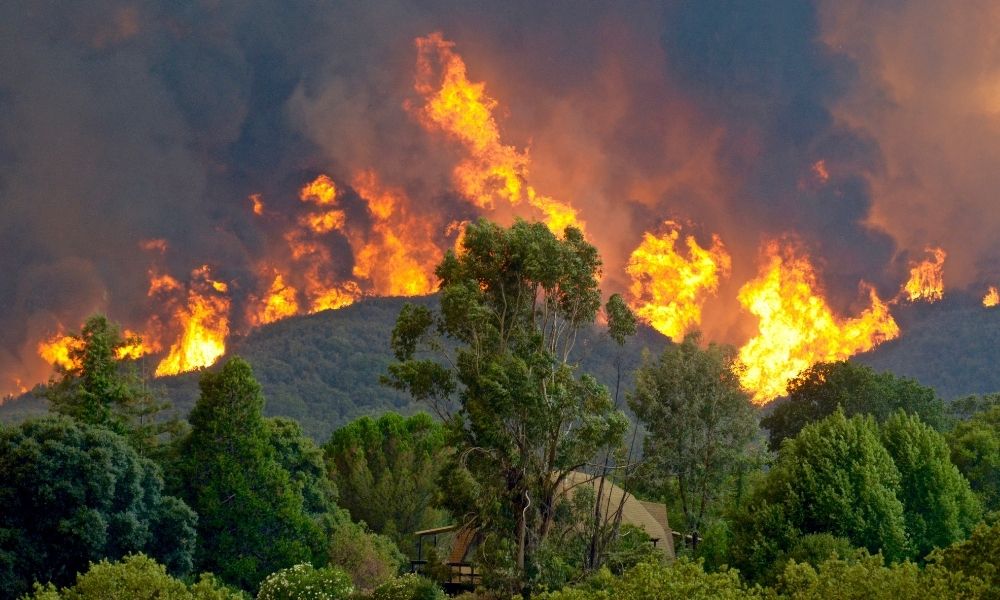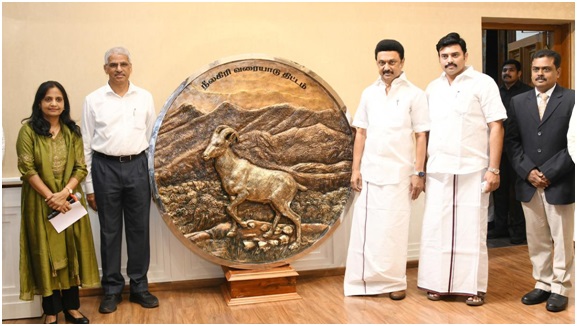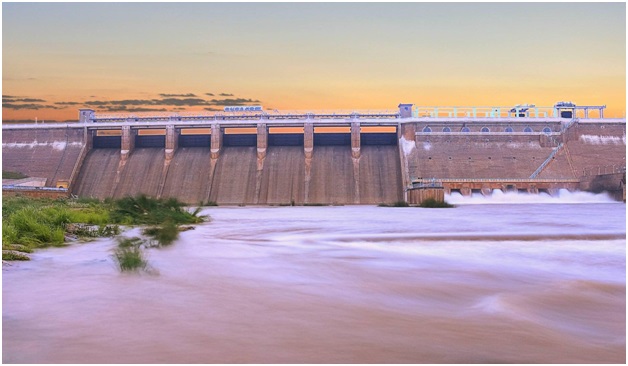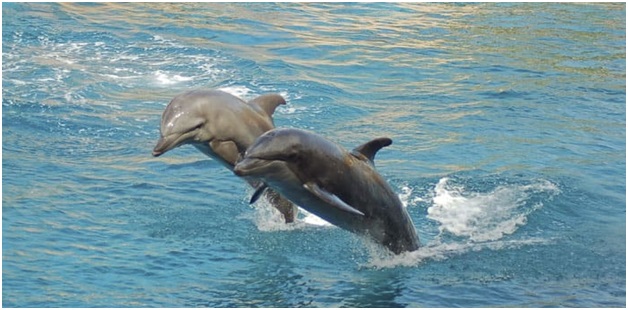Tamil Nadu’s Space Industrial Policy and IN-SPACe

- 26 May 2025
In News:
Recently, the Tamil Nadu Cabinet approved its Space Industrial Policy, becoming the third state after Karnataka and Gujarat to adopt a dedicated strategy to stimulate investments and innovation in the space sector. This move aligns with the national framework set by the Indian Space Policy 2023 and supports India's growing space economy.
IN-SPACe and its Role:
- IN-SPACe (Indian National Space Promotion and Authorisation Centre) is an autonomous, single-window agency under the Department of Space (DoS).
- Created as part of India’s space sector reforms, it promotes and authorises the participation of Non-Governmental Entities (NGEs) in space activities.
- Functions include:
- Supporting private entities in the development of launch vehicles, satellites, and space-based services.
- Facilitating access to ISRO infrastructure and co-development initiatives.
- Providing support for research, innovation, and educational collaboration.
- Headquartered at Bopal, Ahmedabad, it serves as the bridge between ISRO and private sector stakeholders.
- IN-SPACe encouraged Tamil Nadu to formulate the Space Industrial Policy to promote the state’s role in India’s space mission.
Tamil Nadu’s Strategic Space Assets:
- ISRO Propulsion Complex (IPRC), Mahendragiri (Tirunelveli): Engaged in testing cryogenic engines, liquid propulsion systems, and R&D activities.
- Second Spaceport at Kulasekarapattinam (Thoothukudi): Enhances satellite launch capacity, especially for small satellites and polar launches.
- Presence of space-tech startups in areas like:
- Reusable launch vehicles
- In-space manufacturing
- In-orbit refuelling
- Satellite data analytics
- Space Technology Incubation Centre (STIC) at NIT Trichy supports southern-region ISRO projects and academia-industry collaboration.
- Over 250 ISRO vendors operate in the state, creating a robust supply chain ecosystem.
Objectives of Tamil Nadu's Space Industrial Policy:
- Target investment: ?10,000 crore over the next 5 years.
- Employment generation: Estimated 10,000 direct and indirect jobs.
- Strengthens Tamil Nadu’s capabilities in:
- Electronics and precision manufacturing
- Strategic electronics and space-grade components
- Promotes integration of space technologies in governance (e.g., disaster management, fisheries, agriculture, health, transport).
Policy Incentives:
- Payroll subsidy for companies engaged in R&D or setting up Global Capability Centres.
- Space Bays: Select regions will be designated to offer structured incentive packages for investments below ?300 crore.
- Industrial housing incentive: 10% subsidy (capped at ?10 crore) for building residential facilities in space industrial parks.
- Green initiatives: 25% capital subsidy (capped at ?5 crore) for environmentally sustainable developments.
Institutional Support:
- TIDCO (Tamil Nadu Industrial Development Corporation) signed an MoU with IN-SPACe to facilitate:
- Manufacturing activities
- Strategic collaborations with private companies
- R&D and design-based projects in the space domain
Irula Tribe of Tamil Nadu
- 21 May 2025
In News:
In Tamil Nadu’s Kunnapattu, Irula families who have lived on the land for generations face eviction and denial of rights, as nearly half remain without legal ownership or recognition.
Who are the Irulas?
- Ethnic Group: Indigenous Dravidian community, primarily in Tamil Nadu and parts of Kerala.
- Constitutional Status: Recognized as a Scheduled Tribe and classified under Particularly Vulnerable Tribal Groups (PVTGs) in Tamil Nadu.
- Population: Second largest Adivasi group in Tamil Nadu.
- Language: Speak Irula, a Dravidian language related to Tamil and Kannada.
- Traditional Occupations: Snake-catching, healing, collection of forest produce, cattle rearing, and agricultural labour.
- Religious Beliefs: Pantheistic with reverence for spirits; worship Kanniamma (virgin goddess associated with cobras).
- Living Structures: Reside in small clusters called mottas, typically located on hill edges near forests.
Irulas and Snake Venom Economy
- The Irula Snake Catchers’ Cooperative Society supplies nearly 80% of venom for the production of anti-snake venom (ASV) in India.
- The community uses traditional knowledge to locate and capture snakes humanely, extract venom, and release them safely.
The Crisis in Kunnapattu and Beyond
Core Issue: Denial of Land Rights
- In Kunnapattu village, near Mamallapuram, ~40 Irula families have lived for generations. However, nearly 20 families lack legal land documents (pattas).
- The land is classified as meikalporamboke (grazing land), making it ineligible for patta allocation under current policies.
- Without pattas, families are denied access to electricity, government housing, and welfare schemes.
Government Response
- Officials proposed relocation with promised housing and legal ownership, but Irulas resist displacement due to ancestral ties, rituals, and local livelihoods.
- Affected families submitted multiple petitions, seeking in-situ recognition rather than relocation.
Broader Pattern across Tamil Nadu
Similar Issues in Other Villages
- Ottiyambakkam, Iyankulam, Keerapakkam, Chinnakayar, and Nemmeli show the same trend: ancestral tribal settlements without legal tenure, facing:
- Forced or incentivized relocation.
- Inadequate or delayed infrastructure (roads, electricity, water).
- Joint pattas that complicate individual welfare access.
Urbanization vs Indigenous Habitat
- Irula hamlets are increasingly surrounded or displaced by real estate developments.
- Some families resist high-rise housing due to loss of space, cultural disconnect, and impracticality for community rituals.
Notable Success: Senneri Model Village
- Near Chengalpattu, Senneri-Hanumantapuram-Dargesh is a model Irula settlement:
- Home to Padma Shri awardees in snake-catching.
- Over 10 active SHGs working in traditional medicine.
- Gender-inclusive education and organized habitation.
- However, even here, funding and timely housing construction remain challenges.
Challenges and Needs
- Lack of individual pattas limits access to electricity, housing schemes (e.g., PMAY-G), water, sanitation, and health services.
- Infrastructural gaps persist even in relocated areas.
- Traditional knowledge and community bonds are under threat from urban pressures and displacement.
Tamil Nadu's First Glass Bridge in Kanyakumari
- 02 Jan 2025
In News:
- The Chief Minister of Tamil Nadu inaugurated India’s first glass bridge over the sea in Kanyakumari, connecting the Thiruvalluvar Statue and the Vivekananda Rock Memorial.
- The bridge provides a safe and scenic walking route between these two iconic landmarks, eliminating the need for ferry trips.
Key Highlights:
- Dimensions and Design
- The bridge is 77 meters long and 10 meters wide, offering uninterrupted views of the sea from a unique vantage point.
- Designed to withstand marine conditions like corrosion and strong winds, ensuring durability and safety for visitors.
- Tourism Investment
- The bridge was built at a cost of ?37 crore, marking a significant investment in tourism infrastructure for Kanyakumari.
- This project aligns with the state’s vision to boost tourism and modernize amenities in the region.
- Significance as a Tourist Attraction
- The bridge is set to become a landmark tourist attraction, enhancing the visitor experience by providing a direct, scenic route between the two monuments.
- It is expected to play a pivotal role in boosting tourist footfall and the local economy.
About Thiruvalluvar Statue
- Location and Design
- The Thiruvalluvar Statue stands on a rock near the Vivekananda Rock Memorial in Kanyakumari.
- It is a symbol of wisdom, officially named the Statue of Wisdom by the Tamil Nadu government.
- Physical Specifications
- The statue stands at a total height of 133 feet (41 meters), with the statue itself measuring 95 feet (29 meters) and the pedestal adding 38 feet (12 meters).
- Weight: The statue weighs approximately 7000 tonnes and is designed in a hollow structure.
About Vivekananda Rock Memorial
- Location and Significance
- Situated on a rock in the Laccadive Sea, around 500 meters from the mainland in Kanyakumari.
- The memorial commemorates Swami Vivekananda, who represented India’s spiritual legacy at the 1893 Parliament of World’s Religions in Chicago.
- Historical and Religious Importance
- The rock is believed to be the site where Swami Vivekananda attained enlightenment.
- It is also associated with goddess Kanyakumari, who is said to have prayed to Lord Shiva on this rock, with an imprint of her feet preserved there.
- Architectural Features
- The memorial incorporates diverse architectural styles, including the Sripada Mandapam and the Vivekananda Mandapam.
- A life-sized bronze statue of Swami Vivekananda is located at the memorial.
- The rock is surrounded by the Bay of Bengal, Indian Ocean, and Arabian Sea, where these three water bodies converge.
Nilgiris Forest Fire

- 19 Mar 2024
Why is it in the News?
The Indian Air Force (IAF) has deployed its assets to aid the local administration in dousing the raging forest fire that started recently in Tamil Nadu's Nilgiris district.
What is a Forest Fire?
- A forest fire, also known as a wildfire, is an uncontrolled fire that occurs in forested areas or other vegetated landscapes.
- These fires can spread rapidly, fueled by dry vegetation, high temperatures, low humidity, and strong winds.
- Once ignited, they can quickly grow in size, consuming vast areas of land, vegetation, and wildlife habitat.
- Wildfires pose significant risks to human safety, property, ecosystems, and air quality.
Causes of Forest Fire:
- Forest fires are caused by Natural causes as well as man-made causes.
- Natural causes: Many forest fires start from natural causes such as lightning which sets trees on fire.
- However, rain extinguishes such fires without causing much damage. High atmospheric temperatures and dryness (low humidity) offer favorable circumstances for a fire to start.
- Man-made causes: Fire is caused when a source of fire like naked flame, cigarette or bidi, electric spark, or any source of ignition comes into contact with inflammable material.
- Natural causes: Many forest fires start from natural causes such as lightning which sets trees on fire.
Types of forest fire:
- Surface Fire: This type of forest fire spreads primarily along the ground, consuming surface litter such as dry leaves, twigs, and grasses.
- The flames engulf the forest floor as they advance.
- Underground Fire: Underground fires, also known as muck fires, burn with low intensity beneath the surface, consuming organic matter and surface litter.
- These fires often spread slowly and can continue burning for months, destroying vegetative cover.
- Ground Fire: Ground fires occur in sub-surface organic fuels such as duff layers under forest stands or organic soils of swamps.
- They burn herbaceous growth and organic matter beneath the surface, often transitioning from smoldering underground fires.
- Crown Fire: Crown fires involve the burning of the crowns of trees and shrubs, sustained by a surface fire.
- They are particularly hazardous in coniferous forests, where resinous material can fuel intense flames.
Frequency of Forest Fire in India:
- Seasonality: Forest fires in India are prevalent from November to June, with peak activity typically occurring in April and May, encompassing both small-scale and large-scale incidents.
- Vulnerability: The 2019 India State of Forest Report (ISFR) highlighted that over 36% of the country's forest cover is susceptible to frequent fires, with 4% categorized as extremely prone and an additional 6% as highly fire-prone.
- Affected Regions: Dry deciduous forests experience severe fires, with Northeast India, Odisha, Maharashtra, Jharkhand, Chhattisgarh, and Uttarakhand being particularly vulnerable areas.
- Recent Incidents: Notable fire outbreaks occurred in 2021 across Uttarakhand, Himachal Pradesh, Nagaland-Manipur border, Odisha, Madhya Pradesh, and Gujarat, including wildlife sanctuaries.
- In 2023, Goa faced large bushfires under investigation for potential human causes.
- 2024 Trends: Recent reports indicate heightened fire activity in Mizoram, Manipur, Assam, Meghalaya, and Maharashtra, with increased incidents along the Konkan belt, coastal Gujarat, southern Rajasthan, Madhya Pradesh, coastal Odisha, Jharkhand, Andhra Pradesh, Karnataka, and Tamil Nadu.
- Southern India: While Andhra Pradesh and Telangana witness fire incidents, forests in southern India, primarily evergreen or semi-evergreen, are less prone to fires, although Tamil Nadu has experienced recent wildfires.
Reasons Behind This Year's Fires:
- Climate Factors: Dry conditions, high temperatures, clear skies, and light winds have fueled forest fires in southern India.
- Temperature Trends: February 2024 was exceptionally hot, making it the hottest month in southern India since 1901.
- Heat Accumulation: Above-average temperatures over the past months led to a buildup of heat, drying out biomass in forests ahead of the summer season.
- Excess Heat Factor: Western Andhra Pradesh and Karnataka are experiencing higher-than-normal EHF values, increasing the risk of heat waves.
- Mild Aridity: Lack of rain and high temperatures have classified most districts in southern India as mildly arid.
Project Nilgiri Tahr’ Launched in Tamil Nadu (The Hindu)

- 12 Oct 2023
Why in the News?
Consolidating efforts towards the conservation of Tamil Nadu’s State Animal, Chief Minister M.K. Stalin on Thursday, October 12, 2023, launched the ‘Project Nilgiri Tahr’ from the Secretariat in Chennai.
About Nilgiri Tahr:
- The Nilgiri Tahr, scientifically known as Nilgiritragus hylocrius, is an endangered mountain ungulate that is native to the southern part of the Western Ghats.
- Locally referred to as 'Varayaadu,' these creatures are renowned for their remarkable climbing abilities on steep cliffs, earning them the moniker "Mountain Monarch."
- Notably, the Nilgiri Tahr holds the distinction of being the state animal of Tamil Nadu.
Distribution:
- The current range of Nilgiri Tahrs is confined to approximately 5% of the Western Ghats in southern India, specifically in the states of Kerala and Tamil Nadu.
- The Eravikulam National Park in Kerala is home to the highest density and the largest surviving population of Nilgiri Tahrs.
Habitat:
- Nilgiri Tahrs inhabit open montane grassland habitats, thriving at elevations ranging from 1200 to 2600 meters in the South Western Ghats.
Distinctive Features:
- Characterized by a stocky body, short coarse fur, and a bristly mane, Nilgiri Tahrs exhibit sexual dimorphism, with mature males being larger and darker in colour.
- Both males and females possess curved horns, with males having larger ones measuring up to 40 cm, while females' horns reach approximately 30 cm.
- Adult males develop a light grey area or 'saddle' on their backs, leading to the term 'saddlebacks.' The species is recognized by its short grey-brown or dark coat.
Conservation Status:
- The Nilgiri Tahr is classified as Endangered on the IUCN Red List, signifying the critical need for conservation efforts.
- Additionally, it is accorded the highest protection under the Wildlife (Protection) Act of India, 1972, listed in Schedule I.
Why rain and flood woes have hit Tamil Nadu hard in December (Indian Express)

- 22 Dec 2023
Why is it in the News?
Tamil Nadu has battled heavy rainfall throughout December. At the beginning of the month, parts of Chennai and its neighbourhood experienced massive flooding because of Cyclone Michaung.
News Summary:
- Tamil Nadu has experienced significant rainfall, recording 450mm since October 1.
- Among the 38 districts, only 14 have reported deficient rainfall until December 20.
Seasonal Rainfall Norms:
- December rainfall is typical for Tamil Nadu, with the northeast monsoon being crucial for the region.
- Nearly 48% of the annual rainfall (443.3mm) in Tamil Nadu occurs from October to December, impacting rabi cultivation.
Recent Rainfall Patterns in Southern Tamil Nadu:
- Three districts in southern Tamil Nadu witnessed 'exceptionally' heavy rainfall from December 17 to 19.
- The India Meteorological Department (IMD) reported a 100% or more surplus during this period compared to the previous week (December 6-13, 2023).
Factors Contributing to Record Rainfall:
- Vigorous northeast monsoon over Tamil Nadu and Kerala, particularly in the southern regions.
- Development of a cyclonic circulation in the southwest Bay of Bengal on December 16, enhancing northeast monsoon winds.
- The persistence of this system over southern Tamil Nadu on December 18 and 19, led to heavy cloud convection and hefty rainfall.
IMD's Forecast:
- The cyclonic circulation has moved away from the Indian landmass, currently positioned over the southeast Arabian Sea.
- No significant rainfall is expected in Tamil Nadu, but the IMD predicts light to moderate intensity rainfall (up to 64mm in 24 hours) in certain areas of southern Tamil Nadu.
What is Northeast Monsoon?
- The northeast monsoon stands as a significant and permanent element within the Indian subcontinent's climate system.
- Its nomenclature originates from the prevailing direction of the monsoon winds—blowing from the northeast to the southwest.
- In their trajectory, these winds accumulate moisture from the Bay of Bengal, subsequently depositing it over southern states such as Tamil Nadu, Andhra Pradesh, Kerala, south Telangana, and Karnataka.
- This monsoon is alternatively known as the winter monsoon, retreating monsoon, or reverse monsoon.
- Period: The northeast monsoon maintains activity throughout the three-month span from October to December.
- Causes and Influences: One of the primary instigators of the northeast monsoon is the southward shift of the Inter Tropical Convergence Zone (ITCZ).
- The ITCZ, a dynamic belt near the Equator, marks the convergence of trade winds from the northern and southern hemispheres.
- The southward displacement of the ITCZ, coupled with the warming of the Indian Ocean, induces a reversal in the lower-atmosphere moisture-laden winds' direction—from southwest to northeast—thereby triggering the Northeast Monsoon (NEM).
Vaigai Dam (The Hindu)

- 08 Nov 2023
Why in the News?
The third and final flood warning has been issued for five southern districts after the water level in Vaigai dam touched 69 feet (full reservoir level 71 ft) at 7 a.m. on Wednesday, November 8.
About Vaigai Dam:
- Built across the Vaigai River, the Vaigai Dam is located near Andipatti in Tamil Nadu's Theni district.
- The dam was inaugurated by then Chief Minister K. Kamaraj on January 21, 1959, and is often referred to as the lifeline of the people of this region.
- The farmers in the region are completely dependent on the water from the dam for irrigation purposes.
- With a height of 111 feet, the dam has the capacity to store up to 71 feet of water.
- Its main purpose is to provide irrigation water for the Madurai and Dindigul districts, as well as drinking water for Madurai and Andipatti residents.
- Close to the dam, the Government of Tamil Nadu has established an Agricultural Research Station dedicated to crop research.
- Additionally, there is a charming garden called Little Brindavan situated near the dam, offering a delightful place for visitors.
Project Dolphin (The Hindu)

- 08 Nov 2023
Why in the News?
In an effort to conserve dolphins and their habitat, the Tamil Nadu government has issued orders to implement Project Dolphin under the Union government’s Integrated Development of Wildlife Habitats scheme.
About Project Dolphin:
- Project Dolphin is a national conservation initiative approved in 2019 during the first meeting of the Prime Minister-led National Ganga Council (NGC) and launched in 2021 to safeguard both riverine and oceanic dolphin species.
- It's part of the larger Arth Ganga program, which is a government initiative.
- It is modeled after Project Tiger, the successful conservation program that has played a significant role in the resurgence of tigers in India.
- The Project Dolphin will strengthen the marine ecology and overall health of the marine Environment and will be implemented at a cost of Rs.8.13 crore.
- The major habitats of the dolphins are found in the Gulf of Mannar Biosphere Reserve (Tamil Nadu).
- The Ministry of Environment, Forests, and Climate Change is responsible for implementing Project Dolphin.
- The main goal is to ensure the long-term survival of these dolphins and, by extension, the overall health of the river's aquatic life.
- The National Mission for Clean Ganga (NMCG) started a dolphin conservation program in 2016 to work towards this important mission.
- Dolphins play an important role in keeping the marine environment in balance.
- Dolphins worldwide face various natural and human-induced threats which include hunting, entanglement in fishing nets, overfishing, climate change, ship strikes, tourism activities, toxic contamination, noise pollution, oil and gas development, and habitat degradation.
- The conservation of dolphins and their aquatic habitat through the use of modern technology by engaging with fishermen and other ocean-dependent populations is proposed under the project.
- The project will focus on key activities including strengthening of protection activities through better patrolling anti-poaching activities and strengthening of the surveillance and patrolling teams with modern equipment and technology;
- Rescue and rehabilitation activities through the strengthening of veterinary services, patrolling and training, etc;
- Dolphin habitat improvement through the restoration of coastal eco-system like mangroves, corals, sea grass, etc;
- Removal of ghost nets and reduction of pollution in coastal areas;
- enhancing awareness through the celebration of “National Dolphin Day”
